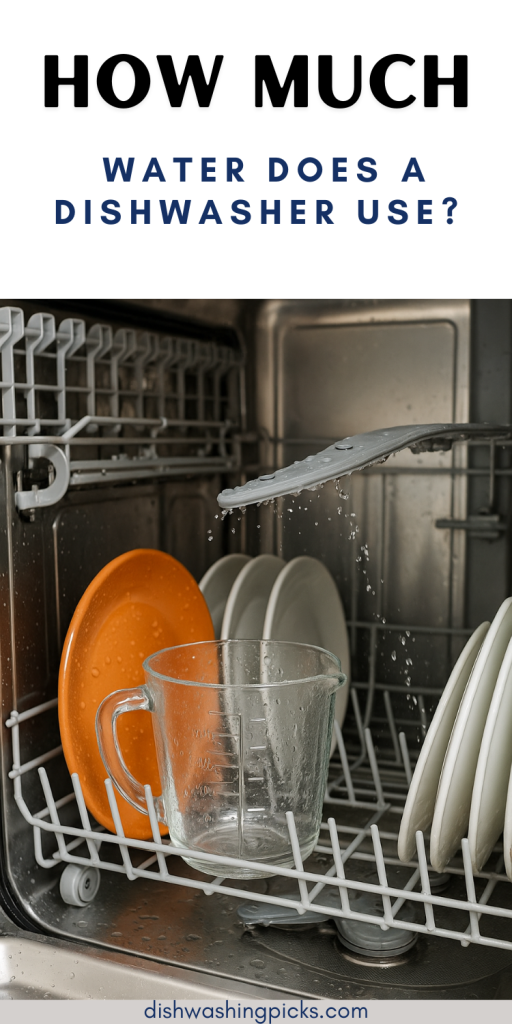
Let’s start with the obvious question…
How much water are we actually talking about here?
You load the dishwasher, hit start, and poof—it magically cleans your plates while you binge-watch Netflix or scroll through TikTok. But behind the hum and that steamy puff when you open the door? Water. Quite a bit of it. Or… maybe not as much as you think.
Most modern dishwashers?
They use around 3 to 5 gallons (11 to 19 liters) of water per cycle. That’s it. Yep, for a full load. Some of the newer energy-efficient models? They can go as low as 3 gallons or less. Pretty wild when you compare it to what it feels like when you hand-wash dishes—where the tap seems to run like a small river the whole time.
Now, before we get into full dishwasher worship mode, let’s back up and talk about where all this water’s going.
So, where does all that water actually go?
It’s not like your dishwasher fills up like a bathtub. That’s a common myth, by the way. It actually uses just enough water to circulate through high-pressure jets that blast the grime off your forks and smoothie blender.
Imagine this:
A spinning, soapy water tornado that loops through your plates over and over again. That’s what’s happening in there. The machine sprays, drains, filters, and reuses that water (until it’s dirty, then it drains and refills again in stages).
Kinda clever, right?
But wait—what if you wash by hand?
Oh, here’s where it gets interesting. Hand washing can use up to 20-27 gallons (75-102 liters) of water. No, that’s not a typo. Unless you’re really conscious—like turning the tap off between scrubs or using a basin—you’re probably using way more than you thought.
So if you’re someone who leaves the water running while washing one plate at a time… well, your dishwasher just became your eco-hero.
“But I rinse everything before I load it… so is it even worth it?”
Okay, real talk: Pre-rinsing is basically a waste of water.
Unless your dishwasher is a fossil from the ‘90s, modern machines are built to handle some mess. Just scrape off the chunks (nobody wants soggy spaghetti in the filter), and let the machine do its thing.
Rinsing before loading? That can add up to 6 gallons (22 liters) of extra water. For what? Your dishwasher is just gonna rewash it all anyway. Let it work for its paycheck.
How does all this stack up in the big picture?
If you’re trying to save water—or just lower that monthly bill—the dishwasher wins. Hands down. Especially if you’re running full loads and skipping the unnecessary rinse.
And get this: ENERGY STAR-rated dishwashers use even less water and energy. That means fewer environmental guilt trips and more peace of mind when you hit that “Start” button.
Oh, and if you’re still using your dishwasher’s heated dry feature? Try air drying instead. It’s not only gentler on your dishes but saves energy too.
So, final answer: Is using a dishwasher better for water conservation?
Short version? Yes. Absolutely.
Long version? If you’re using a newer dishwasher, running full loads, and skipping the pre-rinse—you’re doing both your utility bill and the planet a favor.
Quick recap:
- ✅ Modern dishwashers = 3–5 gallons per cycle
- 🚰 Hand washing = 20+ gallons (unless you’re super careful)
- ❌ Pre-rinsing = water-wasting trap
- 🧠 Smart dishwashing = scrape, load, skip the rinse, and run full loads
Now imagine this…
You’re done with dinner. Instead of standing at the sink scrubbing while your pasta dries to concrete, you toss everything in the dishwasher, press a button, and walk away.
No wasted water. No wrinkly hands. No drama.
Not too shabby, right?

